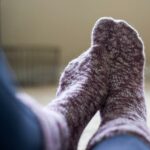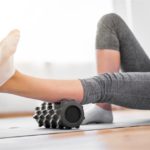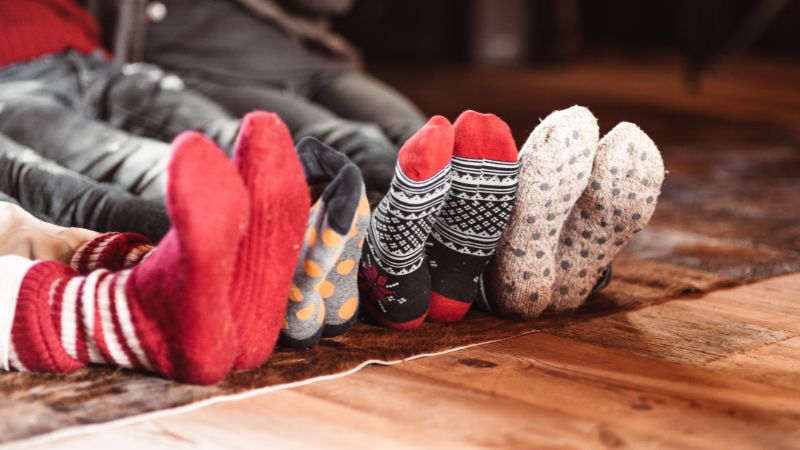
When it comes to keeping your feet dry and comfortable, especially during physical activities, the type of fabric your socks are made from plays a crucial role. This is where moisture-wicking fabrics come into play. But what exactly does “moisture-wicking” mean, and how do these fabrics work to keep sweat and moisture away from your feet?
In this article, we’ll explore the science behind moisture-wicking fabrics and explain how moisture-wicking socks have become essential for athletes and active individuals. You’ll also learn about the most popular materials used in moisture-wicking socks and why they’re a must-have for your activewear collection.
What are Moisture-Wicking Fabrics?
When you’re working out, your clothes can get soaked with sweat. Moisture-wicking fabrics help keep you dry by pulling moisture away from your skin.
Moisture wicking uses a process known as capillary action. This is when the fabric moves sweat through tiny spaces toward the outside, allowing evaporation quickly.
These fabrics often feature hydrophobic materials. This means they don’t like water, so they push it away from your skin. Common materials include polyester and merino wool.
Let’s look at how moisture-wicking works:
- Sweat moves from your skin to the fabric.
- The fabric spreads the sweat across its outer surface and wicks moisture away from the skin.
- The moisture evaporates, leaving you feeling dry and keeping you cool.
What are the Types of Moisture-Wicking Materials?
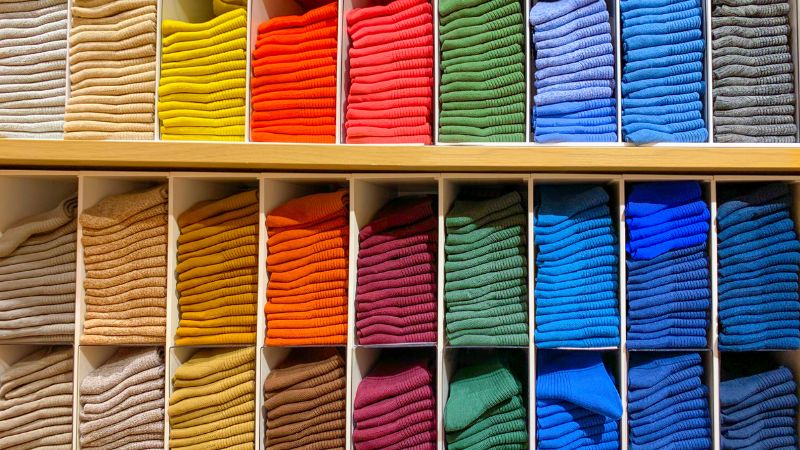
These fabrics help keep you dry by drawing sweat away. You will find both synthetic and natural options that have their own perks, ensuring you stay comfortable.
Synthetic Fiber
Synthetic fabrics are popular for moisture-wicking clothing. Polyester is highly used because it doesn’t absorb water and dries quickly. It’s also lightweight and durable. Nylon is smooth and stretchy, often found in activewear. It handles sweat well but can hold onto odors.
Polypropylene is water-resistant and excellent at pushing moisture away. It’s used in base layers and sports gear. Spandex offers great flexibility and is stretchy, making it ideal for tight-fitting clothes like leggings and compression wear. These fabrics are crafted to keep you dry and comfy during workouts.
Natural Fibers
Natural fibers like cotton also offer moisture-wicking abilities. Merino wool is a top choice because it can absorb moisture while remaining dry to the touch. This helps regulate temperature, making it great for various weather conditions.
Bamboo fabric is another option. It’s soft and breathable, wicking moisture efficiently. Silk is lightweight, providing comfort, though it’s not as effective as other materials. Cotton, when treated, can also wick moisture, though pure cotton tends to hold water and might feel heavy. These choices provide a natural touch while keeping you dry.
What are the Benefits of Wearing Moisture-Wicking Socks?
Moisture-wicking socks offer numerous benefits that contribute to foot health, comfort, and overall performance. Their ability to manage moisture, prevent blisters, control odor, and regulate temperature makes them an excellent choice for people who are looking to keep their feet dry and comfortable.
Moisture Management
The primary benefit of moisture-wicking socks is their ability to keep feet dry by pulling sweat away from the skin. These fabrics draw moisture to the sock’s surface, where it can evaporate more easily. Keeping feet dry helps prevent a range of foot-related issues.
Blister Prevention
One of the most significant advantages of moisture-wicking socks is their ability to reduce the risk of blisters. By keeping feet dry, these socks minimize friction between the skin and the shoe, which is a common cause of blisters.
Odor Control
Moisture-wicking socks help control foot odor by reducing the amount of sweat that accumulates in shoes. Many of these socks also incorporate antibacterial properties, further helping to prevent the growth of odor-causing bacteria.
Temperature Regulation
These socks can help regulate foot temperature, keeping feet cool in warm and cold conditions, but prevent overheating. This is particularly beneficial for athletes and outdoor enthusiasts who may encounter varying temperatures during their activities.
Comfort and Performance
By keeping feet dry and comfortable, moisture-wicking socks can enhance overall performance during physical activities. They help prevent the discomfort associated with wet, sweaty feet, allowing individuals to focus on their activity rather than foot discomfort.
Durability
Many moisture-wicking socks are made from high-quality materials that are more durable than traditional cotton socks. This means they often last longer, providing better value for money in the long run.
Your Next Choice: SinoKnit Moisture-Wicking Socks
At SinoKnit, we offer a range of moisture-wicking socks designed to keep your feet dry, fresh, and irritation-free during any activity.
Here are some of SinoKnit’s moisture-wicking sock options:
1. Performance Athletic Socks
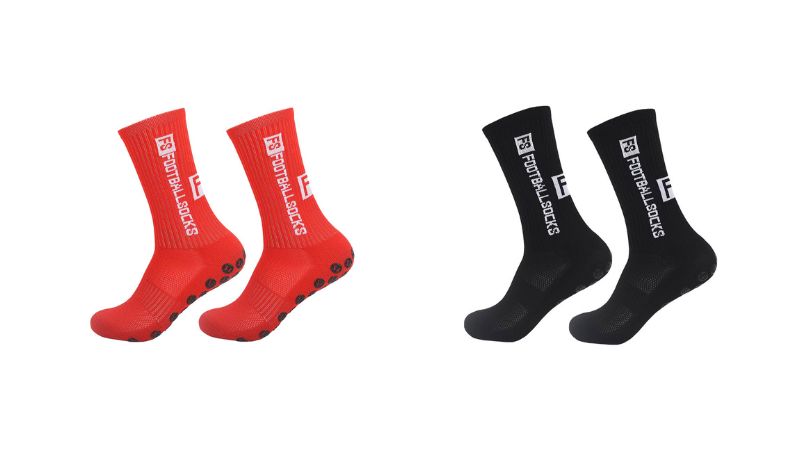
These socks are specifically crafted for athletes and active individuals. Using high-performance synthetic fabrics like nylon and spandex blended with moisture-wicking properties, these socks help pull sweat away from your feet, ensuring you stay comfortable through intense workouts or athletic events. The combination of breathable mesh panels and cushioning in high-impact areas provides both ventilation and support.
2. Merino Wool Socks

Merino wool is one of nature’s best moisture-wicking fabrics, and SinoKnit’s Merino Wool Socks are perfect for outdoor enthusiasts. These socks naturally regulate body temperature by pulling moisture away from the skin, making them a great choice for hiking, camping, or everyday wear. Plus, they provide odor resistance, making prolonged wear more comfortable.
3. Compression Socks
Designed for both athletes and people who spend long hours on their feet, SinoKnit compression socks combine moisture-wicking technology with the benefits of light compression to enhance circulation. The socks are made from a blend of breathable and quick-drying fibers, making them ideal for long-distance running, biking, or recovery.
4. Casual Moisture-Wicking Socks
For daily wear, SinoKnit’s casual moisture-wicking socks combine comfort with functionality. Made from a blend of cotton and performance fibers, these socks are suitable for both work and leisure, keeping your feet dry throughout the day without sacrificing style or comfort.
Why Choose SinoKnit for Moisture-Wicking Socks?
- Advanced Knitting Technology: Our advanced machines optimize the sock design process, ensuring precise fit and durability.
- Quality Materials: We use high-performance fabrics that are soft, breathable, and durable, suitable for any activity or climate.
- Customizable Options: Need unique branding or designs? SinoKnit can customize moisture-wicking socks based on your specifications, including the addition of logos and personalized patterns!
Upgrade your sock game with SinoKnit’s moisture-wicking socks, designed for dry, comfortable wear all day long. Contact us today to learn more or explore customization options!
Frequently Asked Questions
How do moisture-wicking fabrics benefit athletes and active individuals?
For athletes, staying dry is important. Moisture-wicking fabrics keep you comfortable by pulling sweat away from your skin. This helps you feel cooler and prevents chafing during workouts or sports activities.
What are some common terms used to describe moisture-wicking materials?
You might come across terms like “breathable” or “quick-drying” to describe moisture-wicking fabrics.
Are natural or synthetic materials better for wicking away moisture?
Synthetic materials like polyester are often better at wicking moisture than natural fabrics. However, natural options like Merino wool can also perform well while offering a softer feel. Your choice may depend on your comfort and specific needs.
How do moisture-wicking properties compare between polyester and cotton?
Polyester generally wicks moisture better than cotton. Polyester moves sweat away from your skin, keeping you dry. On the other hand, cotton absorbs moisture, which can make you feel damp during high-intensity activities.


